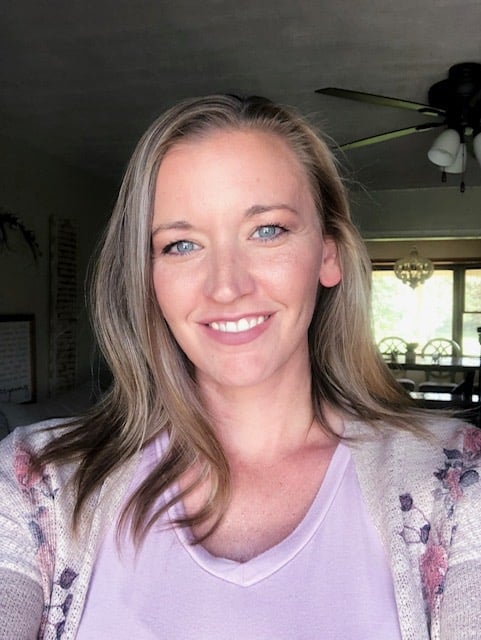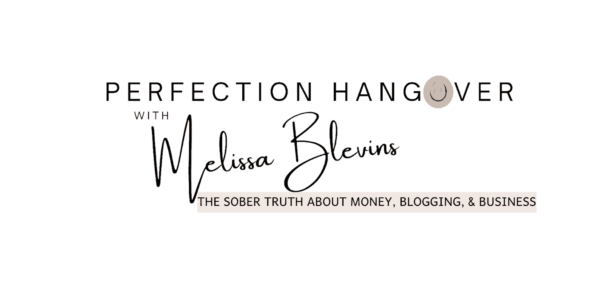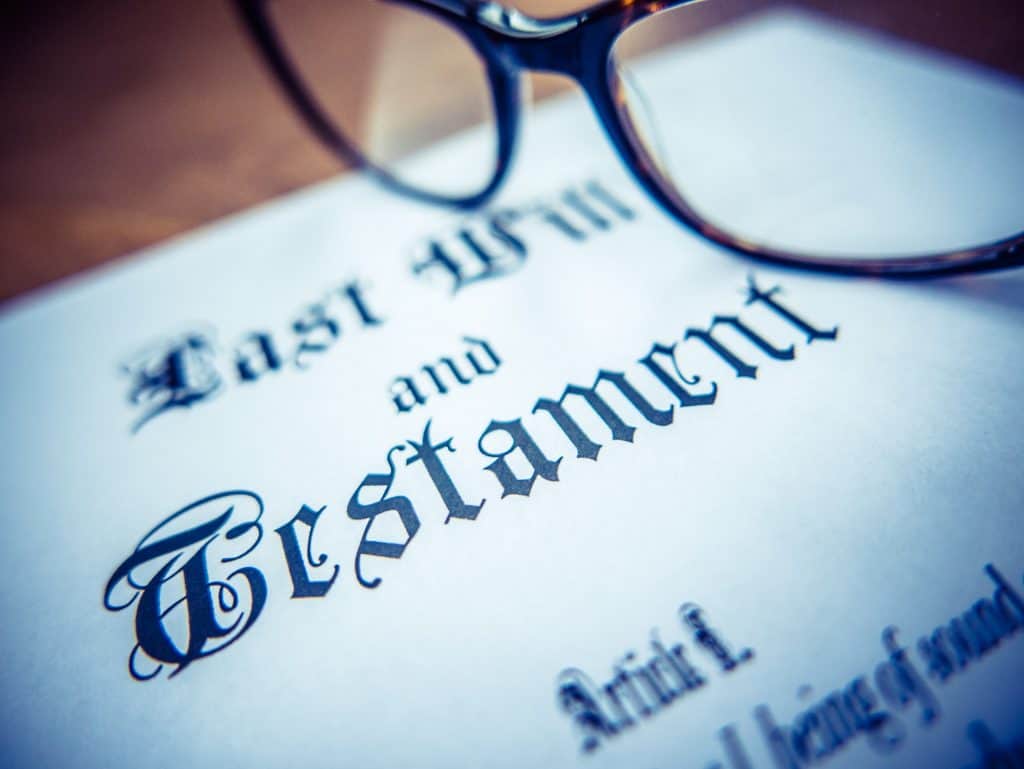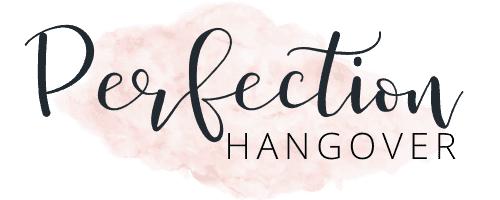This post may contain affiliate links. Click here to read my full disclosure.
For many people, the first thing that comes to mind when you hear the word estate is a fancy house with land in another country. But an estate is everything you own or control, including property, assets, and debts. And unless you plan to live forever, it’s best to have a plan.
Let’s take a walk through the basics of what your estate planning checklist might include and what options are available. Estate planning isn’t just for the rich and famous. If you have minor children or pet, or any kind of property or assets, you likely want a say in what happens to them when you are gone.
Your needs may vary but almost everyone can benefit from having an estate plan.
What Does an Estate Planning Checklist Include?
An estate plan is more than just a plan for how to divide any property or assets you have once you have passed on. It’s easier to understand what an estate plan involves if you call it an end of life plan.
A full estate plan includes planning for carrying out your wishes if you should become incapacitated or otherwise unable to act for yourself prior to death along with what should happen to your assets and debts, pets, and minor children when you die.Some things that may be part of your estate plan can include:
- Power of attorney
- Advance directive/Living will/medical power of attorney
- Will
- Trust
- Guardianship directions
- Provisions for pets
- Transfer on death deed or accounts
- Beneficiary designations on insurance or retirement accounts
Do You Need a Will?
Most people would agree that you need a budget. But whether you need a will versus a trust depends on a few factors that we will address in a minute. But having either a will or a trust is preferable to not having any kind of plan. If someone dies without having a will (or trust) in place, it is said that they died intestate.
What happens next, in that case, will depend on the state laws regarding intestacy, and which state laws govern could be the state where the person lived, the state where their property is located, or both.
The property would pass through the probate process and be distributed according to the state’s laws regarding intestate succession. Information about your estate would be public and may open up your estate to inquiries from fake creditors.
What happens to your estate if you die intestate can get complicated, but the important thing to know is that if you do not have a will or trust, then your property may not get distributed in the way you had hoped or imagined.
What is a Will?
A last will and testament is simply a document setting forward your wishes regarding the distribution of your property and/or assets after you die. Getting a simple will in place is not difficult.
You just need to be of “sound mind” (i.e. know what you are saying or agreeing to on paper) and have two witnesses. And even that isn’t always necessary—some states will accept handwritten (or “holographic” wills) as valid. And your will can address more than just your probate-eligible property and assets. In your will, you can also:
- Choose guardians for any minor children
- Make financial and care arrangements for pets
- Give instructions for paying debts/liabilities
- Name an executor for your estate (the person who makes sure estate property is distributed and debts are paid)
What is not Included in a Will?
It may be helpful to understand what a will does not include. For instance, specifying your preferred funeral arrangements in your will is not helpful, since wills are not usually read until after the funeral.
This can be a separate part of your estate plan. You also cannot leave certain kinds of property or accounts to heirs in a will, such as payable on death accounts (POD), accounts with specified beneficiaries (like life insurance, 401(k), IRA, etc.), property held in joint tenancy, or property held as joint tenants with rights of survivorship.
Those properties will pass to the beneficiaries outside of the probate process.A will cannot be used to put conditions or timelines on gift either. Once the will passes through the probate process, the property and assets are distributed essentially all at once. The executor is not like a trustee, who may be involved in the administration or management of assets for years to come.
Should I Have a Will? Some Advantages
Whether you should have a will or a will and a trust depends on a number of factors: the size of your estate, protecting your children and/or spouse, potential tax liabilities, your state’s probate process, the possibility for family conflict, etc.
If you do not have a lot of assets or want to get the ball rolling on an estate plan with the most cost-effective plan for right now, then a will is a good move. It is easy to get at least a basic will in place, and a will gives you a substantial amount of control over what happens to your things when you die.
You can always decide to set up a trust when you have the funds or desire to do so. A will is also a good idea in states where the probate process is fairly straightforward and simple and if your estate does not approach the federal estate tax threshold, which is currently $11.4 million per individual (2019).
Disadvantages
There are some disadvantages to having a will that are worth mentioning. For instance, if you have a will, then your estate will go through probate after you die.
Probate is a lengthy, public process, and there may be delays in your heirs getting the property you intended for them. Because the estate details are made public, your estate may be susceptible to claims or inquiries from false creditors.
If you have an heir or heirs that you expect will not manage their inheritance well, and you would like to put some limits on it, then you probably need a trust fund. And if you anticipate conflict in your family because of the will that might lead to lawsuits, then perhaps a will is not the best choice.
Even if you decide to put all of your assets in a trust, an estate planner would tell you to have a pour-over will in place in case there are assets at the end of your life that were not placed in the trust.
What Does an Executor Do?
The executor of the estate is responsible for making sure the will is enforced after the person who wrote it die (dies). This includes locating the will and filing a copy with the probate court, contacting banks, creditors, and relevant government agencies (like Social Security Administration) to let them know decedent has passed away, making sure debts and taxes are paid, maintaining will property, making and filing a property inventory with the court, and distributing assets and property, among other things.The executor is typically paid out of estate assets, though the amount varies by state.
Choosing an Executor
You can choose who you want to be the executor of your will, as long as it is someone of some mind over the age of 18. But remember to revisit your will later—the person you would choose at 30 may not be the same person you would choose at 60.
If you die intestate, the court will appoint someone as an administrator or personal representative, according to state law. The administrator carries out the same duties that an executor would.
Many states have a priority list to follow for appointing an estate administrator. In most states, the surviving spouse would be named as the administrator. The person named as an administrator can refuse to serve in that position, and then it would pass on to the next priority relative.
Probate
An estate planning checklist is not useful without explaining probate. Probate is the process of having a will legally be recognized and appointing an executor or administrator to manage the estate and distribute assets to beneficiaries according to a will or state law. This process varies from state to state. In some states, it is somewhat drawn-out and expensive, but in many states, it is relatively fast and inexpensive.
In states where the probate process is simple and relatively streamlined, there is less cause to try to avoid probate but transferring assets to a trust or putting them in special accounts that payout or distribute directly to beneficiaries at the owner’s death.
What is Included in the Probate Process?
The probate process varies somewhat from state to state, as mentioned earlier. But the basic steps are the same. First, a petition is filed with the court to admit the will and appoint the executor, or to appoint an administrator is there is no executor.
Notice of a court hearing to admit the will should be given to all the heirs and beneficiaries, and notice is usually published in the newspaper as well, in case there are unknown creditors. Next, the executor or administrator takes inventory of all estate property and informs creditors of the death of the decedent to allow them time to make a claim.
The inventory may be done by a court-appointed appraiser or by a third party. Then, all debts, liabilities, taxes, and expenses incurred by the estate or the decedent must be paid out of estate assets. Finally, remaining estate property and assets are distributed to heirs according to the will or to the state laws regarding intestacy (if there was no will).
Probate Property
Regardless of what the will may say, certain property must go through probate, and other property skips probate. It generally depends on if it is shared with someone else and whether or not there is a beneficiary designation.Probate property includes:
- Real property for which the decedent was the only owner or was designated as tenant-in-common (and not designated as trust property)
- Bank accounts in decedent’s name only
- Interests in partnerships, corporations or limited liability companies
- A life insurance policy that lists the estate or the decedent as the beneficiary
- Other property, such as vehicles, furniture, automobiles, etc.
Non-Probate Property
Non-probate assets or property are those that have some kind of survivorship or beneficiary designation. For example, if you have a life insurance policy, there is a specific beneficiary named in the policy.
When you die, the benefit gets paid out to the beneficiary without going through probate. Similarly, if you have a property that you own with your spouse, for example, as joint tenants, or joint tenants with rights of survivorship, that property passes to your spouse when you die.
Other types of assets that are non-probate assets include retirement accounts with a named beneficiary, such as 401(k), 403(b), and IRA accounts, any bank accounts that have a payable on death (POD) or transfer on death (TOD) designation, and assets held in trust.
Converting Probate Property to Non-Probate
You can convert many kinds of assets and property from probate to non-probate by switching it to non-probate accounts. For instance, you can shift cash in your bank account to an account with a POD or TOD designation.
For property and other assets that you cannot convert to non-probate otherwise, you can set up a trust and use the property or assets to fund the trust. Why would you want to do this? For the same reasons listed above about why you may want to avoid probate.
And also, because certain non-probate assets, such as a life insurance policy with a beneficiary who is not the estate or the decedent, are generally protected from being seized by creditors. Your situation may vary based on your estate and the state you live in.
Note: Tomorrow can provide you and your family with peace of mind by helping you create a free legal will, or a trust fund with their premium product. (Tomorrow Plus) Enter here for a chance to win a free lifetime subscription to Tomorrow Plus.
Trusts

Trusts are generally positioned as a will alternative, but they can exist in addition to a will or serve the function of a will. A trust can assist your estate planning checklist in various ways.
A trust is a fiduciary arrangement where you (the grantor) give a third party (the trustee) legal title to the property to manage on behalf of someone else (the beneficiary).
The trustee is responsible for managing the trust for as long as there are trust assets. The trustee’s duties vary based on the trust assets but can include making investments, paying bills, and managing and maintaining real estate property.
Different Types of Trusts
Trusts can be classified into two types: revocable and irrevocable. A revocable trust is one that the grantor can change (or “revoke”) while alive. The grantor retains a great degree of control over a revocable trust.
The revocable trust usually does not have a tax advantage, but it does allow property in the trust to avoid probate. A revocable trust automatically converts to irrevocable when the grantor dies.
An irrevocable trust is one that cannot be modified without the beneficiary’s permission once the trust is set up and funded. The grantor does not retain control over an irrevocable trust, and many people use irrevocable trusts to remove property from the taxable estate in order to reduce tax liability and/or protect assets from creditors.
Advantages of Having a Trust
There are a number of advantages to having a trust. One is more control over your assets, where they go, when, and how they are used. If you have a potential heir but you have concerns about giving them a large amount of money or property all at once, you can set up the trust, title your asset in the name of the trust (thus funding it) and give the trustee instructions on how and when you would like it distributed.
Another advantage is privacy. The probate process is public and putting property that would otherwise be probate property into a trust help keep the distribution of your estate private. If you have minor children at the time you pass away, having a trust in place can make sure that your children are provided for over many years.
Some estates have a lot of expenses or debts to pay, and some of the biggest assets may not be liquid, so if you have a trust fund with assets, some of that would be used to pay estate expenses.
For example, you could have a trust that is funded by a life insurance policy, and by having the death benefit pay into the trust, you can avoid possible gift or inheritance taxes on the payout while also making those funds available to pay fees on the estate.
And one of the biggest reasons that people set up trusts is for tax benefits. If you have a large estate, you can possibly reduce or avoid capital gains tax, gift tax, or estate tax liability, and/or claim a charitable giving deduction.
Disadvantages of Having a Trust
Having a trust can be extremely useful and beneficial, but it’s not for everyone. Creating, maintaining, and distributing a trust can cost money, and you would have to decide if the benefits are worth the cost.
Additionally, depending on the type of trust and the assets that fund it, the trust could potentially be taxes annually on income.It’s possible that a trust is unnecessary for you, and that because of the nature of your assets and other factors, you are just fine with a will.
How to Fund Your Trust
A trust is useless if there are no assets or property that belong to it. You need to fund your trust in order for it to function. So once the trust is set up, retitle all of the assets that you want in the trust in the name of the trust. It may look like a lot of work, but just start with the biggest asset and work your way to the smallest. Some accounts you can retitle in the name of the trust include:
- Bank accounts
- Investment and brokerage accounts
- Business interests
- Real property
If you plan on adding real estate to the trust, you generally need a quitclaim deed to transfer it. It should be done according to the laws in the state where the property is located.If an asset is not titled in the trust’s name when you die, it may go through probate and may not be distributed as you intended.
Trustee
Make sure you choose a trustee carefully, especially if they are part of your family. Consider what position it might put them in with the family if they are solely responsible for the administration of trust assets.
Checking in on Your Trust
Just like you should do with your will, revisit your trust periodically to make sure it is established the way you wanted. You may want to change the trustee, for example, if you appointed Uncle Bob and it turns out he is careless with other people’s money.
Guardianship
Guardians for minor children have been mentioned several times, but having a provision for who should be the guardian of your minor children, if you have them, is a prime reason for people to get a will or trust before they think they have the assets to warrant it.
No one can tell you how to choose a possible guardian for your children, and those with children hope that it never becomes a real issue. But try to make a wise choice for a guardian among your family and friends, and then
check with them to be sure it’s ok. In the worst-case scenario, if your minor children lose their parents, you may not want them to be raised by someone who would have never agreed while you were alive. If you don’t name a guardian, the court will appoint one for your minor child(ren).
Pets
Your pets can’t inherit property, though some pet owners have tried to pass it on to them. You can specify in your will who you would like your pets to go to, if alive, and earmark money for the caretaker for that purpose, or you can set up a trust for longer-term care by setting up a trust.
Preventing a Will or Trust Contest
One of the things that will have the most impact on your estate, and that you have the least control over, is having heirs go to court to contest the will or trust.
There are a few ways you can avoid this. You may have strong opinions about how you want to divide your estate, but think two or three time before you divide your estate in a way that appears to favor one person over another, because an uneven division of your property is likely to result in a subsequent lawsuit, which could end up reducing the size of your estate.
If you still prefer to distribute your property and assets unequally to your heirs, you might consider setting up a trust for the inheritance of an heir that is problematic or that you prefer to gift with less.
Power of Attorney, Living Wills and Other End of Life Planning
The last part of an estate planning checklist is a very important part—it addresses decisions to be made before you die, but at the end of your life. No one hopes to get to a point where they cannot make their own decisions or express their opinions on medical, financial, and other matters, but it happens.
Before you arrive at a point where you are incapacitated, make sure you have a living will in place. These documents and powers are called different things in different states, and sometimes to different effects, but the basics are the same.
In the event that you become incapacitated, you will want someone who can call the shots for you. The following documents will help you achieve that:
- Durable power of attorney (POA)
- Medical power of attorney or Healthcare Proxy (HCP)
- Advance health directive
- Guardianship for adults
- Certification of trust/declaration of intent
Durable Power of Attorney
A general power of attorney allows someone to sign and make business and financial decisions on your behalf—but only while you’re well and able to communicate and act for yourself.
A general power of attorney is just a matter of convenience in doing business. What you need for end of life planning is a durable power of attorney, which is like the general power of attorney, but it stays valid even if or when you become incapacitated.
Medical Power of Attorney
A medical power of attorney, sometimes called healthcare power of attorney, is by definition a durable power of attorney. It only kicks in after you become incapacitated, and only for medical decisions.
The durable power of attorney for finance, etc. and medical power of attorney do not cross over in responsibilities, they are totally separate. For both documents, make sure you choose someone you trust and make sure they are aware of what your preferences are.
Once you grant someone durable power of attorney, it is not set in stone. You can revisit and reassign at any time, as long as you are still in possession of your faculties.
Advance Health Directive
An advance health directive is a document with instructions for what you want to have done in certain medical situations. That can include a “Do Not Resuscitate” order if you do not want them to shock you or perform CPR on you if you go into cardiac arrest while on a hospital stay.
It can include orders not to intubate or not to keep you alive using a breathing machine or other means if your organs are failing. What you put in your directive is up to you, but it is important to have someone who has medical power of attorney as well.
If you just have an advance health directive, your wishes may not be followed. Your medical power of attorney can be your advocate to make sure you get the care and treatment you wish for and deserve at the end of your life.
Guardianship for Adults
Having a guardianship document is also important in the event you become incapacitated, and it would only take effect in the event that that happens. Having someone who is appointed your guardian if you become incapacitated allows you to let someone who knows you and knows what you would if you could communicate.Some of the decisions that a guardian can make in your stead include:
- What facility you go to
- Refusing or consenting to medical treatment
- Where you will live
- What medical facility you will go to
- Filing, defending, or settling lawsuits
- Borrowing or lending money
Certification of Trust/Declaration of Intent
These last two documents help protect your trust, if you have one, to make sure they function as you intended. A certification of trust states who the trustees are and who will succeed them after you are gone. A declaration of intent document states that you intend to put all of your titled and non-titled assets in the trust that you set up. That way, if there are any assets that were meant to be a part of your trust, they can be added by your agent or guardian.
Final word
There are a lot of parts that go into estate planning, but if you start now, and start with what is most important to you, you can get it settled.We can help! Tomorrow can provide you and your family with peace of mind by helping you create a free legal will or a trust fund with their premium product. Your family is worth it.
This article originally appeared on Wealth of Geeks and has been republished with permission.

Life is a collection of memories and experiences. There are ups and downs. I am so grateful for God’s grace and am on the journey to a renewed spirit, free of perfectionism. Perfection Hangover offers the sober truth – no filter.



This checklist is very informative for newbies! Especially now, the past few weeks have been incredibly difficult for many people in communities around the world. Everyone must be prepared for our own peace of mind.
Thanks for sharing this!